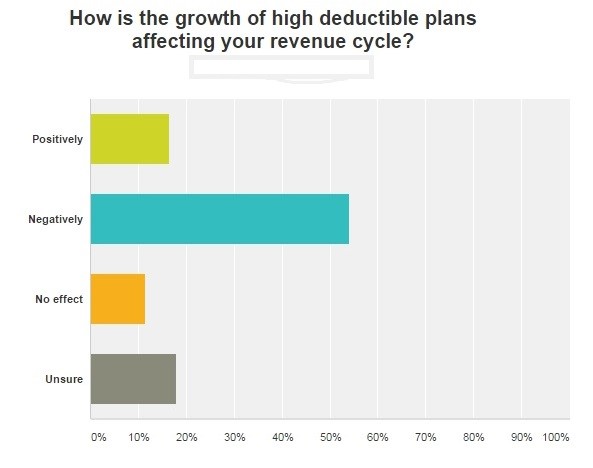The high deductible health plans (HDHP) are trending like never before. According to the Bureau of Labor Statistics, 42% of workers covered under employer medical care plans had high deductible plans in 2017. The idea of paying low monthly premiums while opting for high deductibles is attractive, though a number of outcomes have become the matter of concern not just for the patients but also for the healthcare providers.
Talking about the diagnostic imaging utilization, an increasing enrollment in HDHP led to 7.5% decrease in the imaging utilization and 10.2% decrease in imaging payments, as reported in February, 2016 (Medical Care Journal). As a result, the radiologists (both hospital-based as well as those at independent imaging centers) are at the receiving end. How?
- Patients opting for HDHP tend to postpone diagnostic imaging procedures like MRI, clearly to avoid paying out of the pocket.
- The rate of payment denials has increased with the rise in HDHPs and radiologists experience tough time in collecting payments. According to Crowe Revenue Cycle Analytics, the net managed care revenue decreased by 2.5% and 1.4% respectively for outpatients and inpatients in 2016, due to low collection rates from the HDHP holders. Earlier, the insurance providers would directly pay the healthcare providers, but HDHPs put the ball in the patients’ court.
- Patients are often confused about the diagnostic imaging procedure costs and they indulge in ‘imaging shopping’ which place many radiology providers at a competitive disadvantage.
RevCycle Intelligence sums up the situation (for general health care provision) as follows:

So, what could be done to deal with these challenges? Here are some useful ideas and tips:
Focus on Patient Information Management: It is an important requirement, especially for the hospital-based radiologists who usually don’t have direct interaction with the patients at the time of provision of the diagnostic imaging procedures. The solution is to use the right software for accurately storing complete patient information, including demographics, billing and insurance information right at the time of service provision. It allows easy tracking of patients’ records and keeping in notice the unpaid bills.
Transparency in Information Sharing: The patients with HDHPs would follow the usual habit of visiting the websites of different hospitals and radiology centers to gather information about what various imaging procedures would cost. Unfortunately, many of these websites provide erroneous or outdated information about pricing, which obviously discourage the patients. Make sure that you maintain transparency in providing concrete cost estimates to the patients.
Benefit Out of ‘Imaging Shopping’: You can actually reach out to the patients and endorse your imaging procedures to capture their willingness. Here are some ways to do it:
- Help them understand the deductible reset (patients usually end up paying more by postponing the imaging procedures to the Q4, simply to save the out-of-the-pocket deductibles for the rest of the year). Tell them that the procedures may cost lower if done earlier.
- Offer them competitive prices. That’s the simple business technique and it implies to the field of healthcare as well.
- Utilize the stores patient information to instantly know about specific health plan of every patient as soon as he or she makes an enquiry. Provide them with the most realistic cost to win their keenness. For this, you must have a good radiology information system at place.
Above all, offer them multiple payment modes that make it convenient for the patients to pay. Send them appointment reminders through automatic procedures. In short, you need to really add value to your services through technology and customer service to make HDHPs work in your favor.